How to Rebatch Jelly That Didn’t Set Properly
If you need to rebatch jelly because it didn’t set, you’re not alone! I’ve been there too—frustrated when my low-sugar grape jelly refused to gel.
All I wanted was a homemade jelly with less sugar, but it didn’t happen the first few times. Those kitchen mistakes, however, became a valuable lesson.
Now, I’m sharing exactly how to rebatch jelly that didn’t set so you can save your batch and avoid wasting ingredients.
For more jam and jelly tips, techniques, and recipes, check out our Jams and Jellies page—your go-to resource for all things homemade spreads.
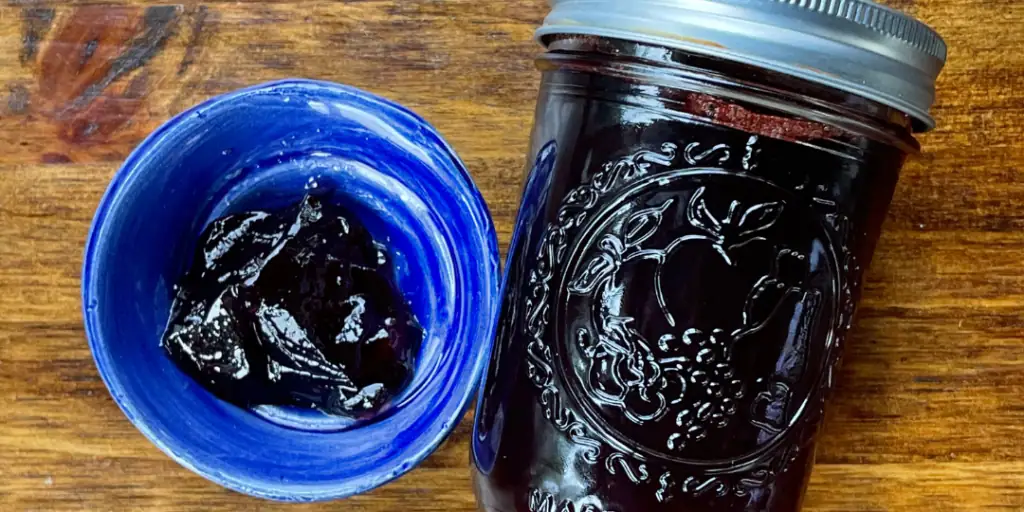
This post contains affiliate links. This will not cost you anything but will help us to offset the cost of running the blog. We only share products we are using and are items we would recommend to a friend. Thank you for your support! Click ‘HERE’ for more info.
Why Your Jelly Didn’t Set Properly
Making jelly or jam with the right consistency involves a little bit of science. The key factors are pectin + sugar + acidity in the fruit + time/temp when cooking. You can make jams and jellies without using added pectin because pectin is naturally in fruit.
The trouble is, there’s a different amount in each type of fruit, and it requires longer cooking times and more monitoring. I have made a few things without pectin, but I prefer to go the easier route and add it for most recipes.
The sugar and the pectin work together with the acid in the fruit to form a gel-like consistency when it is heated. Most recipes only take a few minutes of boiling, and it’s done!
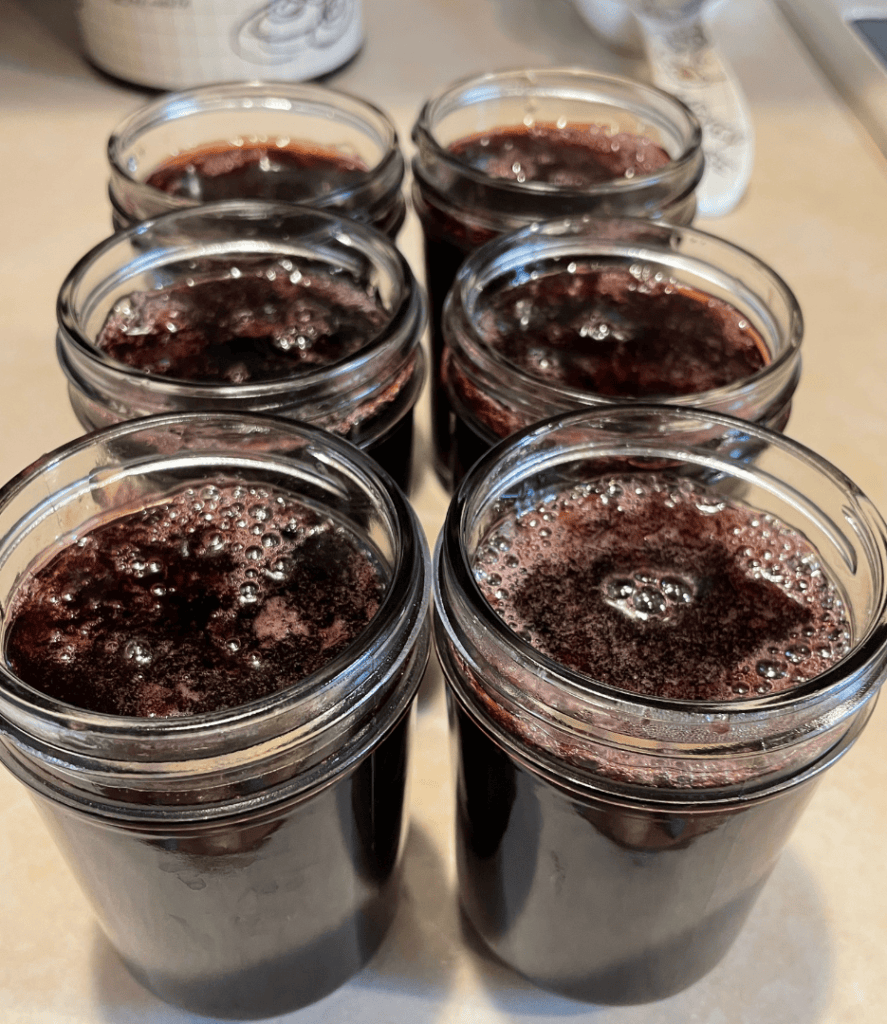
So, if it’s so easy, why didn’t your jelly set? You either didn’t use enough pectin, or enough sugar, or didn’t let the mixture boil for long enough. If you don’t let your mixture boil long enough, the heat doesn’t have a chance to dissolve the sugar and activate the pectin. When you add pectin, it doesn’t take long for this chemical reaction to occur, so that probably wasn’t the problem if you used pectin in your recipe.
In my case, I was trying to use a low-sugar recipe with low-sugar pectin and probably didn’t add enough sugar to help activate the pectin. Unfortunately, when you rebatch, you add more sugar and pectin, so my lower sugar dream for my grape jelly did not come true 🤣. However, I am not complaining because I would still rather have homemade jelly over store-bought any day.

Too Much Sugar/Not Enough Sugar
If you add too much sugar to your jelly, it will become too thick or could crystallize because the sugar can’t all dissolve. No one wants to have gritty jelly on their morning toast. If you don’t add enough sugar to your jelly, it won’t set and will be runny (this is what happened to mine). Sugar also acts as a preservative for canned goods, so not adding enough sugar can result in your jelly developing mold even if it is sealed properly.
Too Much Pectin/Not Enough Pectin
Similar to sugar, if you add too much pectin to a jelly recipe, it will affect the texture, possibly making it bubble, uneven, or really thick. If you don’t add enough pectin, it will be runny because it can’t properly gel. Insufficient amounts of pectin can also make for a shorter shelf life.



Time to Rebatch Jelly
First of all, rebatching simply means that you need to redo the jelly. It involves dumping your sealed jellies into a pot and adding more sugar and pectin, then reheating it.
What You’ll Need:
- runny jelly
- Sugar: I use organic raw sugar
- Regular pectin (not low sugar for rebatching): I usually get pectin from Walmart, Farm and Fleet, or Menards because it is generally cheaper than on Amazon
- lemon juice
- Half-pint jars: I don’t usually buy these from Amazon because they are a lot more expensive, so look for them at Walmart, Farm and Fleet, Menards, etc.
- Lids and rings for jars: It is recommended that you use new lids every time you can something new to make sure you get a proper seal.
- Canning tools: These tools make canning so much easier
- Water bath canner: Mine is similar to this one! There are also bundles where you can get your canner and the tools together and save a little bit.
Instructions for How to Rebatch Jelly that Didn’t Set

Don’t use more than 4-6 cups at a time when you need to rebatch jelly. You want to make sure the batches are small enough that everything works properly and gets to the right consistency. Measure the jelly that needs to be rebatched.
This recipe is for 4 cups at a time, but you can adjust to make it 5 or 6 if you have more than 4 half pints of jelly that need to be rebatched. If you have more than that, I would suggest just doing multiple batches.
Wash and sanitize your jars by boiling them, putting them in the oven, or running a sanitizing cycle on your dishwasher. Since these jellies are only going to be in the canner boiling for 5 minutes, they need to be sanitized. According to the University of Georgia’s National Center for Food Preservation, if something is being water bath canned for 10 minutes or longer, the jars don’t need to be sanitized.
Let’s get JAMMIN’ (or jellying…not quite the same ring 😂)

Heat the jelly in a pot over medium heat until it starts to boil. Mix sugar and pectin together in a bowl to help the pectin not clump when you add it to the jelly. Add sugar/pectin mixture and stir. Add water and lemon juice and bring to a rolling boil over medium-high heat.
Stir constantly. Boil for 30 seconds and remove from the heat. Skim any foam that formed on the top if you want to. I don’t actually skim the foam because it doesn’t bother me, but it bothers some people, so if you want to skim it, go for it!
Fill sanitized jars to 1/4 inch head space. Wipe the rims and put the lids on. Rings should be finger-tip tight. Put water in your water bath canner and put it over medium heat to start heating the water. Add your jelly jars and bring the water to a boil.
Process in the water bath canner for 5 minutes. Turn off the heat and let it sit for 5 minutes. Remove from the canner and allow to cool for 12-24 hours. Check for proper seal and store in a cool, dry place with the rings off.


Frequently Asked Questions about How to Rebatch Jelly
Why didn’t my jelly set?
As I mentioned above, jelly sometimes doesn’t set due to too much or not enough sugar or pectin. The time and temperature it is being cooked also play a huge part in the thickness.
How do I know if my rebatch jelly has set?
There are several ways to tell if jelly has set. The spoon test is where you let some jelly fall off a spoon. If it comes off in individual drops, it is not ready; when it comes off as a sheet, it is set. When the temperature of your jelly reaches 220ºF, it should be set.
The plate test can also be helpful in knowing if your jelly has set. Put a small plate in the freezer when you start making your jelly. When you’re ready to test it, put a small amount of jelly on the plate and wait a few seconds. Press it with your finger, and if it wrinkles, it is ready to come off the heat. If your finger slides right through it, keep cooking.
Can I use the microwave to reheat the jelly?
It isn’t recommended to use the microwave because you don’t have as much control. Using the stove allows you to keep a close eye on your jelly to make sure it is boiling for the proper amount of time.
How long will rebatch jelly last?
Rebatched jelly should last as long as any other properly canned jelly; about 1 year stored in a cool, dark place. Once it has been opened, it should be eaten within a couple of weeks.
What’s the best way to store jelly?
It is best to store home-canned goods in a cool, dark place. Do not stack jars on top of each other, and always store with the rings off.
Thanks for checking out this post! I hope you were able to rebatch jelly that might have failed you the first time. Let me know in the comments what kind of jelly you needed these instructions for.
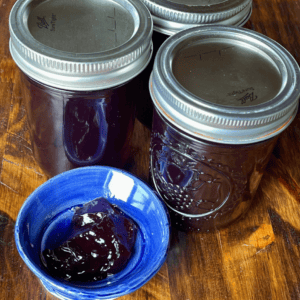
Rebatched Jelly (because it didn’t set)
Ingredients
- 4 cups runny jelly
- 1/4 cup sugar organic, raw
- 1/2 cup water
- 2 tbsp bottled lemon juice
- 4 tsp pectin not low-sugar pectin
Instructions
- Measure jelly that needs to be rebatched. Wash and sanitize jars. Put jelly in a pot and bring to a boil.
- In a bowl, mix sugar and pectin together to help the pectin not clump when you add to the jelly. Once the jelly boils stir in the pectin/sugar mixture. Add water and lemon juice and bring to a rolling boil over medium-high heat.
- Stir constantly. Boil for 30 seconds and remove from heat. Skim any foam that formed on the top (optional).
- Fill sanitized jars to 1/4 inch head space. Wipe the rims and put lids on. Rings should be finger-tip tight.
- Process in a water bath canner for 5 minutes. Remove from canner and allow to cool for 12-24 hours. Check for proper seal and store in a cool, dry place with the rings off.






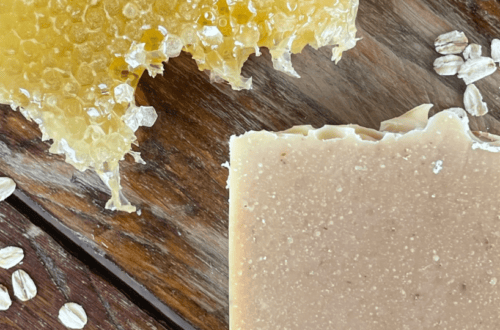
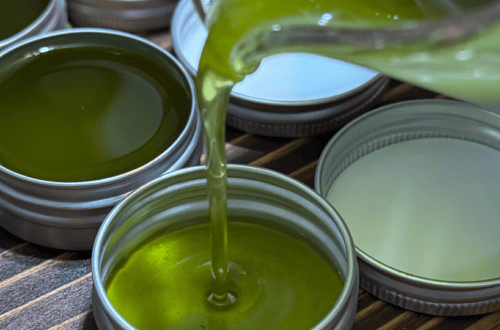
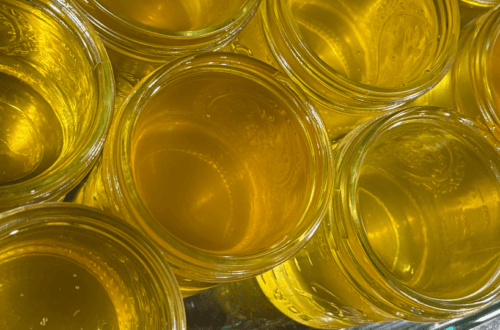
13 Comments
bill marsano
Your re-batching methods looks good; will try tomorrow. Re water bath: Isn’t thiks kind of a belt-and-suspenders approach? I’ve never used it for jam or tomato sauce. Jam has lots of sugar as a preservative; tomato sauce has plenty of acid. I’ve never had a problem–0 poisonings so far!–but maybe I’ve just been lucky! (Have always used soap-and-hot-water clean jars and lids.) Your advice, please.
Samantha
Hey there! Thanks for the comment, the rebatching has really saved me a few times with jellies. I’m a little confused with your question. Do you mean you don’t usually water bath can your jams and tomato sauce? How do you make sure they seal? I know when I first started my canning journey I used the “upside down” trick or just had everything so hot that when I placed the lid on it would seal without the water bath. This “works” in the sense that sometimes it does seal but the seal is often not trustworthy and I noticed a lot of them came unsealed and there was mold in them eventually. Even if there isn’t mold in your jar there could be other bacteria so I always use a proper canner. Plus, I store my jars without the rings so I know they are staying strong and sealed. I know there are seasoned canners who use some of these methods still but water bath canners are so easy to use that it’s not worth the risk to me to maybe not get a safe and proper seal. I’m not sure if I answered your question but wanted to share my thoughts!
Dorthy J. Nowlin
Jelly didn’t set. I reheated with pectin and it still didn’t set. Help.
Samantha
Hi Dorthy, how frustrating!! What kind of jelly are you working on? I hate when I have finicky jelly. Sometimes lower pectin fruits like strawberries, plums, and rhubarb are especially more difficult to get to set. If you’re willing to try one more time, try this: rebatch using 4 cups of runny jelly, 4 tbsp sugar, 2 tbsp bottled lemon juice, 4 tbsp low-sugar pectin, and NO water. Bring it to a rolling boil and boil for 1 minute, then process again. Different jelly types require different ratios of ingredients to rebatch sometimes.
If this doesn’t work, or if you just don’t want to keep going with this batch, use it as a syrup, mix it with yogurt or ice cream, put it over waffles or french toast. I’m sure it is still so delicious! Hope this helps and please let me know how it goes!
Pingback:
Eric
I made an 8 half pint batch of crabapple jam with pulp using a recipe that sweetens with honey. The jam didn’t gel despite 15 minutes of boiling before putting into jars. Since I’m using crabapples which are loaded with pectin no additional pectin was used. The recipe called for 1/4 cup of lemon juice which I think could be the problem. As a chemical engineer I know that pectin is a heteropolysaccharide polymer and is subject to acidic hydrolysis below pH 3.8. Since lemon juice has a pH of 2-3 will rebatching work or should I just pour it down the drain?
Samantha
I definitely would NOT pour it down the drain! Even if you don’t rebatch it, you can still eat it over pancakes, yogurt, ice cream, cheesecake, whatever! You could try reboiling it and testing for the gel phase (and making sure it reaches 220ºF at sea level). Honey is a little trickier than sugar so that might be why you’re having issues.
The rebatching method I use calls for pectin and sugar, but you might be able to get away with just adding a little bit of pectin and reboiling. Or you can try it without adding anything. Did you check to see if the jam got to the gel phase using a cold spoon/plate?
Renee Ross
I made muscadine and scuppernong jelly. It did not set. It’s also very sweet. Can I reprocess without adding more sugar? I used 35 lbs so there’s a lot of jelly!
Samantha
Hi Renee! You could give it a try with one batch at a time and see if it works. Use 4 cups of your jelly, a box of pectin (4 tbsp), and 2 tbsp of lemon juice and see if it gels for you. Follow the directions in the blog post just without adding the sugar if you really don’t want to add anymore. Let me know how it works!
D. Morgan
I tried this and it didn’t work for me. I hope the rest of you have better luck.
Samantha
I’m so sorry it didn’t work for you. I’d be happy to troubleshoot with you. What kind of jelly were you trying to rebatch and did you use regular or low sugar pectin?
Bill
Hi and thanks for the great article. I tried making jam out of beautiful small size “street grapes”(Concord style grapes in abundant clusters on ornamental vines along my parking). I used “less-sugar” pectin and sweetened with very little sugar – 1 or 2 cups per 15 cups grape liquid from crushing and then straining. Initial attempt I did not add lemon juice – just pectin and grapes etc – boiled the appropriate time and canned/processed. It never jelled. I reprocessed using a recipe very similar to yours with more pectin, sugar and lemon and the jam from the extreme bottom of the cooking pot jelled in the open air while the canned and processed jam did not set at all. I wonder if the mix was cooked too long – which can chemically decompose the pectin?
Anyway, so here I am about to open all the jars and try your recipe – more lemon juice, more sugar and more pectin. But in a test of taste after the last attempt to get the mix to set, the jam tastes a bit sour from the lemon juice or pectin, and less grape-y. Will even more pectin and lemon juice make the jam even tarter and less grape-y tasting?
Samantha
Hi there! Thanks for the comment. Ugh, I hate when I’m having a hard time with a batch of jelly. I have gotten frustrated many times with jellies that want to be difficult. Cooking too long can break down the pectin and make it so the jelly doesn’t set. I haven’t had a problem with jellies tasting sour due to the lemon juice but I would imagine it would start to change the flavor because you’ve had to continue to rebatch. Let me know how it turns out if you end up trying it anyways! Good luck.